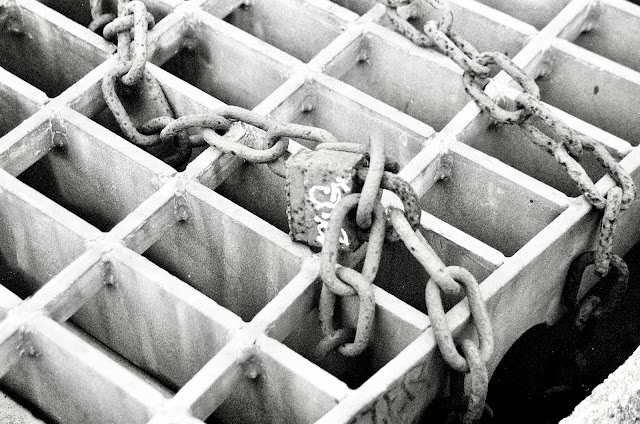these engagements of mine, these insertions into the world, have always met some need in me. but what is the need? it's deep & persistent. it feels more scientific than artistic, inasmuch as the two are different as i practice them. there's a strong emotional element & a social one too. i seek relations with what i find myself within, though not exactly with other humans i might encounter there.

for the most part, my photographs contain no people. from this, i deduce that humans aren't what i seek in these insertions. well, i already know that i actively avoid encountering humans in these places; covid adjustment has actually empowered something already extant in me & how i exist (or don't) in social space. but i am nevertheless very interested in the traces of human involvement in the places i go. i am interested in what happens once humans are gone, or change their uses (it's always uses) of a place. the residue of human involvement, even or especially when the place itself is a residue.

this city is a vast midden, but that's not to say it is unworthy of engagement or interest. in fact it's the layers of refuse--of refusal--that speak to its histories as they have overlapped or overcome or overdetermined each other. there's a hum, maybe, if i can call it that, of many times superimposed on many time-reckonings. i know this is a large element of what i seek when i'm in this movement-action, these insertions.
in my 2020 poetry collection Theories of Performance i described the vulnerability of my body in these spaces, in the poem "The Danger of Movement" :
[...] an hour's intervention of a
solitary human body in the
landscape--an hour's flicker
between stillness & motion,
tasting of the light & gusts
of air, so much vulnerable
meat & bone to manage.
so many breaths to give up.
my seeking, my "hour's intervention," carries a set of risks that i try to hold in awareness without letting them hold me back. sometimes the visual absence of human movement other than my own is complicated by the certainty that i am being observed. i am aware of the aggressiveness of my camera.
i keep my distance from what may force a contact nobody wants.
but it's undeniable--there's a painful beauty in these places, these unloved places, these damaged abandoned places. i empathize with them, & maybe i seek them because they comfort me, having known abandonment & the utter void of being unloved. i know i gravitate toward all that has that history, those who suffer. i suffer too; it creates compassion, & this is necessary. but there's always a tension between the need to comfort/be comforted, & the need to avoid further pain, worse harm, even its potential.
i receive & engage things (& people & experiences) many people can't even perceive. this is my neurology &, i think, my philosophy. it's like having no skin. sometimes it's delicious, other times excruciating, & i can't always tell or predict when it shifts. it's dangerous to be so open. it's absolutely necessary.




Jay! "it's like having no skin" (!!) / a way to think about acting as intellectual abrasions on one another / Susan Stewart: "A stranger is waking across the river/ and by nightfall you may walk into his sleep."
ReplyDeletei'm reading lauren berlant's last book, ON THE INCONVENIENCE OF OTHER PEOPLE, & it is relevant here. i'll be posting about it in a while (like a couple weeks).
Delete"the residue of human involvement, even or especially when the place itself is a residue": like a specter or some kind of stain--humans as snails, places as snails. completely adore these photographs. the couch!
ReplyDeletedid you catch the "meat industry laboratory" sign on the building's door? this building is in back-of-the-yards. i love the idea of human-as-snail.
Delete